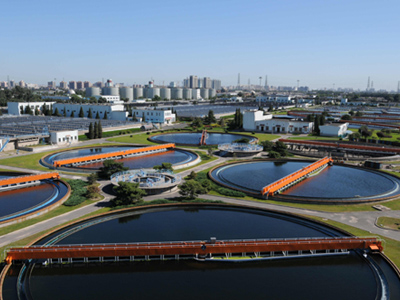OZONE APPLICATION FIELDS
Industrial Applications
Ozone applied in industry effluent treatment.

Industrial Applications
Ozone in paper industry effluent treatment
Related Products: http://www.o3tech.cn/product/large-scale-ozone-generator-35kg.html
Long back research started to eliminate pollution causedby effluents of pulp and paper industry, Ozonation has been widely investigated method. The effluent of paper industry contains many types of Hgnocellulose’s structure.
The wastewater produced by this industry tends to beheavily contaminated and highly coloured, especially when the industrial process makes use of artificial colouring agents.
Here conventional wastewater treatment often proves to beof limited efficiency, Ozonation effectively removes colour from paper industry effluent containing humic material. It is difficult to determine the exact chemical effect that Ozonation had upon the humic structure. Ozone reacts with the molecules responsible for colouration, breaking down those functional groups that have high electron densities.
These include the humic acids, tannins, and lignin commonly found in vegetable matter. Ozone close to 10-15 mg/lit. is required toreduce the pollution load to significant level for industrial wastewater.
Ozone in dyeing industry effluent treatment
The wastewater produced by the dyeing industry containsmany artificial colouring agents. We can classify the effluent based on different parameters.
Physical properties includes colour, turbidity (dissolvedand suspended impurities) etc. whereas chemical properties includes the constituents of acidic dyes, basic dyes, sulphides dyes, azo dyes, metallic complex dyes etc.
Generally speaking, biological treatments are onlycapable of bringing about, slight improvements in wastewater colour. This is becausethe molecules responsible for colouration are not biodegradable. Effluent colourcan however be improved by aeration or oxygenation. One-way of decolourization might be through destruction of the double nitrogen-nitrogenbonds, this is confirmed by the appearance of NO and NOz radicals following ozone treatment.
Ozone in removal of colour
Surface water are generally coloured by natural organic materials such as humic, fulvic and tannic acids. These compounds results from the decay of vegetative materials and are generally related to condensation products of phenol like compounds, they have conjugated carbon/carbondouble bond.
Ozone rapidly break organic double bond. As more of thisdouble bond is eliminated, the colour disappears. Surface water canusually be decolourized when treated with 2-4 ppm of ozone.
Ozone in treatment oftoxic waste
The detoxification of industrial waste water is an issue that has taken a marked importance in recent times. The chemical industry, inparticular, discharges many substances of high immediate toxicity. For this type of waste, mere dilution is not a sufficient anti-pollution measure. The concentration levels are crucial factor when considering toxicity. Ozone isincreasingly used in tertiary treatment for eliminating all traces of harmful substances. The advantage here is that ozone treatment does not require the use of additives, which may prove toxic than the compound removed.
In mixtures containing toxic compounds, ozone will notalways react specifically with the compound that we wish to eliminate.For this reasons it is advisable, wherever possible to apply conventional purification techniques first and follow up with Ozonation as a second or third stage. Concentration levels are a crucial factor when considering toxicity. Thus ozone is increasingly used as final treatment stagefor eliminating all traces of harmful substances.
Ozone in treatment of cyanide waste
Chemically speaking, cyanide pollutants can becategorized in three main groups :
a) Hydro cyanic acid,
b) Simple alkaline cyanides (sodium cyanide, potassiumcyanide)
c) Soluble complex cyanide (potassium copper cyanide,sodium, iron cyanide, potassium iron cyanide, etc).
Cyanides are a prime example of highly toxic wastewater;the substances are toxic to fish at concentration as low as 25 ppb. They are powerful enzyme inhibitors and continue to find widespread use in many industries e.g. froth floatation for mineral extraction, cyaniding of precious metal ores, gas purification in coking plants, synthesis of organic compounds(plastic, textiles), manufacture of pharmaceutical products etc. The largest quantities of cyanide are discharged from the degreasing tanks, electroplating vats and rinsing baths found in surface treatment plant. The cyanide concentration in wastewater from these sourcescan vary from 20-100 mg/L.
Cyanide and cyanide complexes can be destroyed by ozone treatment, in test performed for U.S. air forceindustrial wastes containing up to 10,000mg/L of cyanide were treated with ozone and ultraviolet light. The treatment reduces the cyanide concentration to below detectable level.





